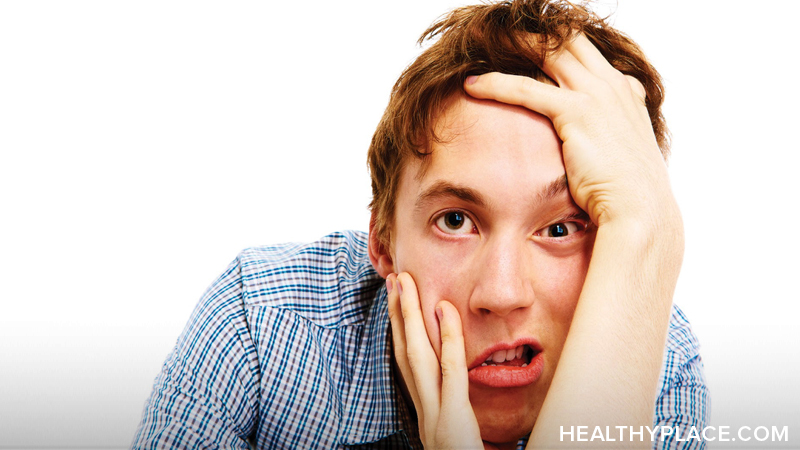Anxiety Disorder Symptoms, Anxiety Disorder Signs

Anxiety disorder symptoms are a problem for an estimated 40 million adults in the U.S. who are living with this condition. Unfortunately, only one-third of those seek treatment.1
The big problem is that most people don't recognize the signs of an anxiety disorder and only seek treatment for physical symptoms that may mimic other diseases (see Panic Attacks vs. Heart Attacks). It's important to learn these signs. With professional help, most anxiety disorders are highly treatable.
One thing to note, a key component of an official anxiety disorder diagnosis is that the symptoms of an anxiety disorder must negatively impact the person's day-to-day life.
Physical Symptoms of Anxiety Disorders
One of the reasons anxiety disorders are underdiagnosed is because of their physical symptoms. Many times, doctors do not initially make a connection between the physical symptoms a patient may be experiencing and the possibility that they're being created by an anxiety disorder instead of a medical condition.
Common physical symptoms of anxiety disorders include:2
- Increased breathing and heart rate
- Sweating
- Trembling / shaking
- Weakness or fatigue
- Difficulty getting, or staying, asleep
The physical symptoms of severe anxiety can feel very scary.
Other Signs and Symptoms of Anxiety Disorders
There are eleven types of anxiety disorders identified in the Diagnostic and Statistical Manual of Mental Disorders (DSM-IV-TR), each with specific symptoms. However, some symptoms are common across most anxiety disorders.
Common emotional symptoms of anxiety disorders include:
- Feelings of fear
- Feelings of uneasiness or apprehension, worry
- A sense of danger, panic
Specific signs and symptoms of anxiety disorders include the following:
- Panic disorder – sudden fear or terror; a feeling of chest pain, choking, nausea, dizziness, being detached, fear of losing control, fear of dying, numbness, chills or hot flashes
- Agoraphobia – avoidance of places where you might be trapped or embarrassed to leave; may cause a panic attack
- Specific phobias – sudden anxiety over a specific object or situation; may cause a panic attack
- Social phobias – anxiety over social or performance situations
- Obsessive-compulsive disorder – persistent reoccurring thoughts often combined with an extreme desire to perform specific actions
- Posttraumatic stress disorder – feeling of re-experiencing a past traumatic event; avoidance of anything that reminds you of the past event; feelings of detachment; decreased concentration; irritability; excessive vigilance
- Acute stress disorder – similar to post-traumatic stress disorder but immediately following a stressful event and short-lived
- Generalized anxiety disorder – persistent and excessive worry for six months or more related to multiple situations
Anxiety disorder symptoms may also be related to another medical condition or a substance use disorder. Children may experience a unique anxiety disorder, separation anxiety disorder, where symptoms occur when they are separated from those in parental roles.
Other symptoms of anxiety disorders that do not specifically fit into one of the above categories may occur. This may prompt the diagnosis of anxiety disorder not otherwise specified (NOS).
APA Reference
Tracy, N.
(2012, January 13). Anxiety Disorder Symptoms, Anxiety Disorder Signs, HealthyPlace. Retrieved
on 2025, November 27 from https://www.healthyplace.com/anxiety-panic/anxiety-disorders/anxiety-disorder-symptoms-anxiety-disorder-signs



